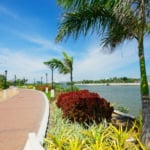Name: Michi-no-Eki Kyotanba Ajimu-no-Sato
Address: 65-1 Sone Fukashino, Kyotanba-cho, Funai-gun, Kyoto, Japan
Official/Related Website URL: [http://ajim.info/](http://ajim.info/)
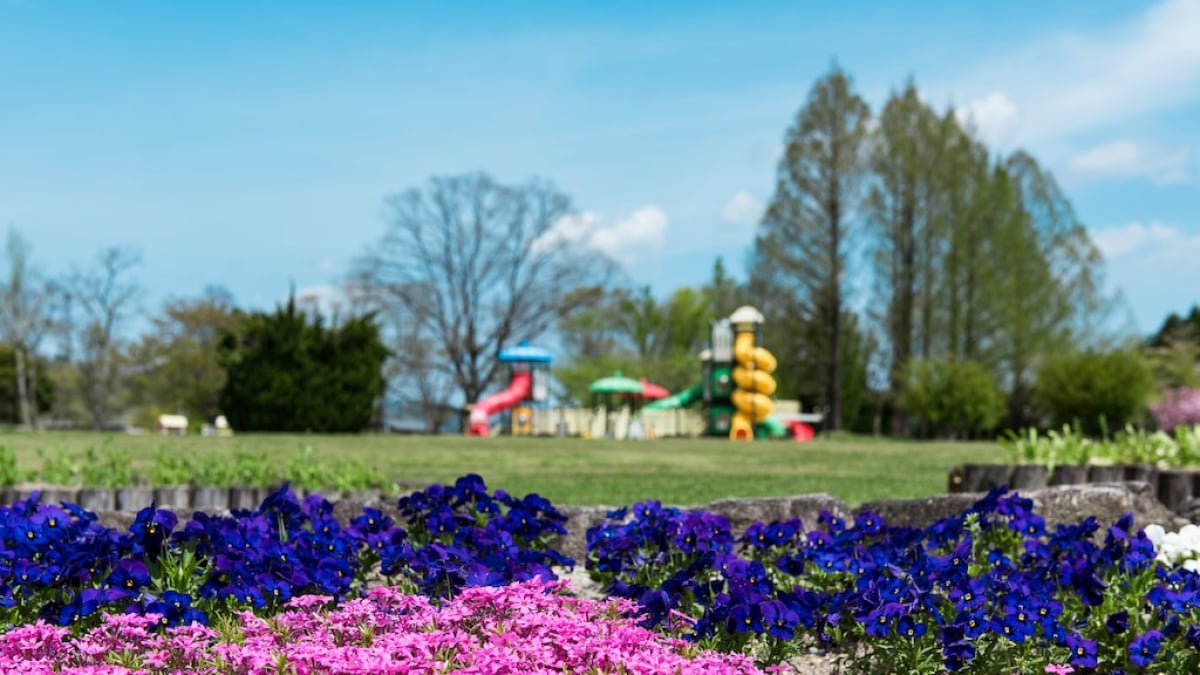
Eight recommended tourist spots in Kyotamba Town, a lush green destination just one hour from Kyoto City
Kyotamba Town is a lush rural area located between the Kameoka Basin and the Fukuchiyama Basin. It has a rich history as a key point along the San'in Kaido trade route, and even today, many major transportation networks pass through the area. With convenient access from Kyoto City in about an hour, Kyotamba is an excellent destination for a day trip. Here are some recommended tourist spots in Kyotamba Town.
table of contents
[x] close
Eight recommended tourist spots in Kyotamba Town, a lush green destination just one hour from Kyoto City
1. Michi-no-Eki Kyotanba Ajimu-no-Sato
Michi-no-Eki Kyotanba Ajimu-no-Sato opened alongside the completion of the Kyoto-Jukan Expressway. This roadside station features a variety of dining options, including the food court *Tanba Daishokudo* and the buffet-style restaurant *Bonchi*, where visitors can enjoy delicious lunch and dinner. It also has a facility for processing local specialties such as Mizuho soba and udon made with black soybeans.
Inside the facility, *Kyotanba Marche* offers a rich selection of locally sourced ingredients, including rice, vegetables, and processed foods. On the Tanba Parking Area side, there is a dog run, making it a popular stop for travelers with pets. The station also has an information corner where visitors can learn more about the surrounding area, making it a great place to stop by during sightseeing.
2. Tanba Wine House
Tanba Wine House is a vineyard and winery spanning an area equivalent to two Koshien Stadiums. Visitors can learn all about Tanba wine through detailed explanations from instructors. The winery offers tours where guests can observe the wine-making process, enjoy tastings, purchase wine, and have a meal, making it a perfect destination for wine enthusiasts.
Tanba wine is known for its light and refreshing taste. A tasting set is available for those who want to sample multiple varieties. The raisin butter sold at the Wine House is a popular accompaniment, making it a great souvenir to take home.
Name: Tanba Wine House
Address: Toyoda, Kyotanba-cho, Funai-gun, Kyoto, Japan
Official/Related Website URL: [http://www.tambawine.co.jp/](http://www.tambawine.co.jp/)
3. Michi-no-Eki Mizuho-no-Sato Sarabiki
Michi-no-Eki Mizuho-no-Sato Sarabiki is a roadside station located next to the sports resort zone *Greenland Mizuho*. With a spacious parking lot and well-equipped restrooms, it is an ideal stop for a break during sightseeing trips.
The most popular item at the light meal corner is the homemade noodles made from 100% locally sourced buckwheat flour. There are various soba dishes available, including shimeji tempura soba and tenzaru (cold soba with tempura).
Fresh local vegetables are another highlight. The vegetable market offers a variety of local produce, such as Tanba black edamame, cultivated shiitake mushrooms, Tanba chestnuts, and Hatakeshimeji mushrooms. Handmade sweets, wine, and Tanba handicrafts are also available, making them great souvenir options.
Name: Michi-no-Eki Mizuho-no-Sato Sarabiki
Address: 10-1 Obokuyasumiishi, Kyotanba-cho, Funai-gun, Kyoto, Japan
Official/Related Website URL: [http://www.greenlandmizuho.co.jp/station/](http://www.greenlandmizuho.co.jp/station/)
4. Michi-no-Eki Marques
Michi-no-Eki Marques, located along National Route 9, is one of Japan’s largest roadside stations, with a parking capacity of 550 vehicles. True to its name, which means *market* in Danish, the facility features a variety of shops, including a supermarket and six dining establishments such as fast-food restaurants. It serves as a marketplace not only for travelers but also for local residents in their daily lives.
A wireless LAN is available near the food court, and the station is equipped with charging stations for electric vehicles (EVs). Additionally, electric-assisted bicycles are available for rent. With a wide selection of local specialty products and souvenirs, visitors can comfortably enjoy the charm of Kyotanba Town.
Name: Michi-no-Eki Marques
Address: 3-5 Shikishida, Suchi, Kyotanba-cho, Funai-gun, Kyoto, Japan
Official/Related Website URL: [http://www.tamba-markeds.com/](http://www.tamba-markeds.com/)
5. Shitsushi Limestone Cave

Shitsushi Limestone Cave is the only limestone cave in Kyoto Prefecture. This vertical cave has a total length of 52.5 meters and a height difference of 25.1 meters, with a cool temperature maintained throughout the year. During the peak summer season, it becomes a popular natural cooling and adventure spot for visitors.
Designated as a natural monument of Kyoto Prefecture, Shitsushi Limestone Cave is also an important habitat for cave-dwelling bats, including the *Kokikugarashi Bat*. To protect the bats during their hibernation period, the cave is closed for two months from January to February each year. Visitors planning a trip should take note of this seasonal closure.
The surrounding park features bungalows and a campsite, offering opportunities for barbecuing and trout fishing. It is an ideal location for enjoying the outdoors. The site also has a free parking lot with space for 50 cars. Additionally, the 20-meter jumbo slide is a favorite attraction among children.
Name: Shitsushi Limestone Cave
Address: Shitsushi, Kyotanba-cho, Funai-gun, Kyoto, Japan
Official/Related Website URL: [http://www.kyutamba.org/](http://www.kyutamba.org/)
6. Kototaki Park
After a five-minute walk along a gently sloping path by the stream, a towering cliff waterfall suddenly appears. Water cascades down a 43-meter-high solid rock face, resembling the thirteen strings of a *koto* (Japanese harp). Kototaki is recognized as one of the *200 Natural Wonders of Kyoto*. The sound of the water echoing through the quiet forest resembles the melody of a koto, giving the waterfall its name.
Kototaki Park, which surrounds the waterfall, features scenic walking trails, lush green pathways, a suspension bridge, and Yatsuhashi (eight bridges), attracting many birds. During the autumn season, visitors can enjoy stunning fall foliage, while in winter, the LED illumination event *Fuyu Hotaru* transforms the park into a mesmerizing light display, blending natural beauty with artistic lighting.
Name: Kototaki Park
Address: Suchi, Kyotanba-cho, Funai-gun, Kyoto, Japan
Official/Related Website URL: [http://www.kyotamba.org/](http://www.kyotamba.org/)
7. Seven-Colored Tree

Near *Chorogatake*, the highest peak in Kyotanba Town, the *Seven-Colored Tree* can be found in Gongen Valley, located in the settlement of *Hodosu*, at the upper reaches of the Kamowachi River where it merges with the Yuragawa River. This fascinating tree is a giant katsura tree that coexists with six other species—cedar, zelkova, wisteria, reed grass, Japanese maple, and Itaya maple.
The way moss covers its trunk and the unique spread of its branches give it a mystical presence, creating an aura unlike any ordinary tree. It radiates an overwhelming sense of natural energy. The *Seven-Colored Tree* is designated as a natural monument of Kyotanba Town and is also listed among *Kyoto’s 200 Natural Wonders*.
For access, the best route is through the *Shinrin Fureai Road* hiking trail from Hodosu. From the valley entrance, it is about 150 meters away, which takes only about five minutes on foot.
Name: Seven-Colored Tree
Address: Hodosu, Kyotanba-cho, Funai-gun, Kyoto, Japan
Official/Related Website URL: [http://www.kyoto-kankou.or.jp/culture/](http://www.kyoto-kankou.or.jp/culture/)
8. Kyoto Prefectural Tanba Natural Sports Park
Located along National Route 9, Kyoto Prefectural Tanba Natural Sports Park is an urban park covering approximately 52.7 hectares. It was established in 1970 as part of Kyoto Prefecture’s 100th anniversary project. Surrounded by the rich greenery and fresh air of the Tanba Highlands, the park is a beloved recreational area enjoyed by many visitors.
The park features a variety of facilities, including a track and field stadium, a baseball field for soft baseball, tennis courts, and a family pool, all of which require a fee. In addition, there are free facilities such as the Tanba Astronomical Observatory and a children's playground. The park also offers accommodation facilities that can host up to 300 people. For access, it is about a 10-minute drive from the Tanba Interchange on the Kyoto-Jukan Expressway. By bus, visitors can take a West Japan JR Bus from JR Sonobe Station.
Name: Kyoto Prefectural Tanba Natural Sports Park
Address: Sone Kuzushishitadai, Kyotanba-cho, Funai-gun, Kyoto, Japan
Official/Related Website URL: [kyoto-tanbapark.or.jp](http://kyoto-tanbapark.or.jp)
◎ Conclusion
Kyotanba Town is a place where the beauty of mystical nature is always close, and a rich way of life has been passed down for generations. It offers the luxury of slowing down and immersing yourself in nature, making it a great destination to visit when in Kyoto.
Beyond its tourist spots, Kyotanba is also known for its seasonal delicacies, such as ayu fish from the Yuragawa River, Tanba chestnuts, black soybeans, and Kyoto wine. Simply exploring the roadside stations that offer these local specialties and traditional dishes can be a wonderful experience.
RELATED ARTICLES
REGIONS
CATEGORIES
FEATURED ON Guide
-
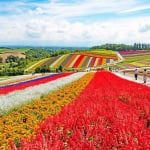
Where will you go for the summer vacation? Introducing recommended spots for domestic travel
-
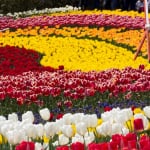
Kaizu City’s Recommended 7 Tourist Spots. Enjoy the Culture and History Nurtured by Wajū!
-
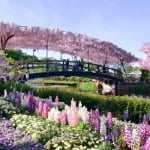
What Makes Ashikaga Flower Park So Special? A Treasure Trove of Photo-Worthy Spots!
-
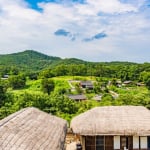
600 Years of Radiant Tradition: Korea’s Historic Villages of Hahoe and Yangdong
-

Two-Colored Seas and a Pink Beach! 4 Must-Visit Spots in North Eleuthera
MOST POPULAR ON Guide
-
 1
1Doha: Must-see Attractions in the Capital of Qatar
-
 2
2Toronto: 10 Things to do in this Picturesque Canadian City
-
 3
3Amarillo: A City Famous for It’s Amazing Canyons, Great History and Music
-
 4
4South Korea: Dazzling Scenery, Rich Culture and Fascinating History
-
 5
5Kuwait: A Country in Middle East Asia Famous for Hot Sand Dunes and Stunning Cityscape




